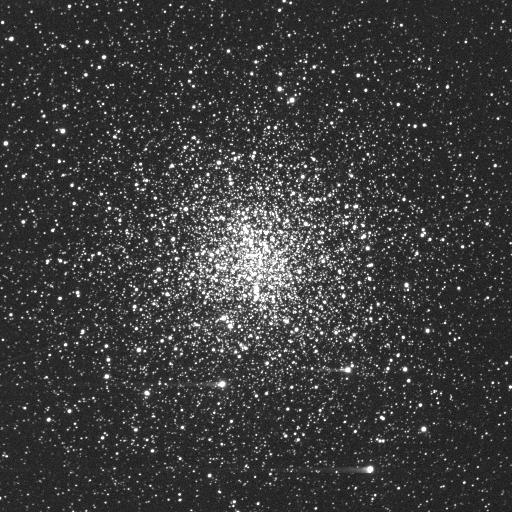It seems as if each new observation from the Hubble Space Telescope or the
Chandra X-ray Observatory adds fuel to the Electric Universe fire. Funded
research groups, on the other hand, are constantly finding new stellar entities
or peculiar galaxies that require them to attach addenda to existing theories.
Now astronomers are faced with yet another observation that they are "struggling
to explain."
A
recent announcement from the Hubble team states that there are clusters of
stars orbiting another galaxy over a billion light years away that aren't
behaving as conventional understanding suggests – rather than being blue-white
they are red.
Scientists use a measuring rod for the universe that is based on expansion out
of a primordial explosion, they believe that the further out into space they
look they are seeing the universe as it was closer to the beginning. Because
objects located at 1.2 billion light years are supposed to be as they were 1.2
billion years ago, the expectation is that any stars that are observed at that
distance should be youthful, near the beginning of their lives, with rich
supplies of hydrogen fuel. In that case, the stars ought to be burning hot and
blue, radiating high frequency x-rays and extreme ultra-violet light.
Globular star clusters are normally found in a halo around galactic nuclei. They
are thought to be structures that have been gravitationally attracted to the
host galaxy because many of them have the appearance of age – they have large
populations of red stars that are supposed to be old stars. Some theories
speculate that the clusters might have been ejected from a host galaxy, or that
they formed in conjunction with a host galaxy.
No one can be sure, but the ratio of blue stars to red stars is commonly used to
indicate an overall age of one cluster in respect to other similar globular
clusters. As the Hubble press release pointed out, however, many clusters in a
remote galaxy are filled with stars that appear much too red for them to be so
young.
According to Jason Kalirai of the University of California, Santa Cruz they
found 195 clusters in the galaxy with, perhaps, thousands more too dim to see
right now. Because current models rely on the principles outlined above, they
did not expect the star clusters to be 20% redder than predicted. In an
assessment of the discovery, Kalirai is quoted as saying that it could be an
unexpectedly metal-rich population of globular clusters, or that the stellar
models are incorrect. Although it is a frank admission from an honest
investigator, the third possibility is that the theory is simply incomplete and
not incorrect.
In a
previous Thunderbolts Picture of the Day we referred to
Dr. Don Scott's book The Electric Sky, and showed how he improved the
Hertzsprung-Russell diagram of stellar evolution by adding another scale to the
horizontal axis: Current Density at the Star's Surface. In so doing, how stars
appear when viewed through optical telescopes or x-ray detectors will not be
dependent on age and distance, but on the amount of energy flowing into
the star from the surrounding environment. The greater the electric current, the
hotter and brighter the star will appear.
Stellar evolution is supposed to follow a path that depends on how various
stages of thermonuclear fusion transform hydrogen into heavier elements. The
mass of a star and its spectrum contribute to understanding how old it is
because the ratio of different elements is supposed to provide an idea of how
long it took to convert its original mass into those other elements.
As stars accumulate heavier elements in their cores, they fluctuate in output
when their temperatures change due to changes in the fusion reactions taking
place. They turn red as one phase ends because the atmosphere expands and the
outflow is spread over a larger area, and then they turn yellow or white again
as another element starts to fuse into still heavier atoms. However, another of
the Hubble team members is quoted as saying, "It's possible there's something
about stellar evolution we don't understand."
The best conventional explanation that has been forthcoming, at this point, is
that there is some intervening cloud of material that acts like a filter,
absorbing blue light. Since the star clusters they found are located at such a
distance, and they are so faint to begin with, the bluer stars could be hidden
behind the clouds.
As
Don Scott wrote:
"In the ES model, perhaps the most important factor in determining any given
star's characteristics is the strength of the current density in Amperes per
square meter (A/m2) measured at that star's surface. If a star's incoming
current density increases, the arc discharges on its surface (photospheric
tufts) will get hotter, change color (away from red, toward blue), and get
brighter. The absolute brightness of a star, therefore, depends on two things:
the strength of the current density impinging into its surface, and the star's
size (the star's diameter)."
So, in reality, the Hubble research team has not discovered anything that is
particularly out of the ordinary. The stars in the globular clusters are merely
obeying another aspect to the cosmic energies that permeate the universe:
electricity. It is possible that they are not as far away as they appear. They
may not be nearly as old as the team thinks because they are not behaving
according to gravity and redshift theories but according to theories of plasma
cosmology.







